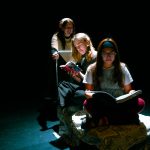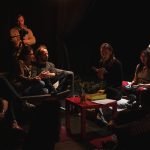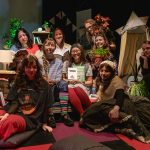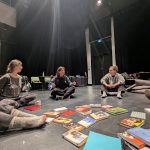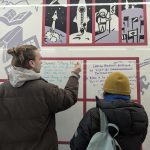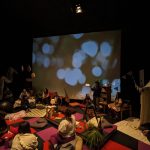Something to Drop and Anchor. Residency in Canada
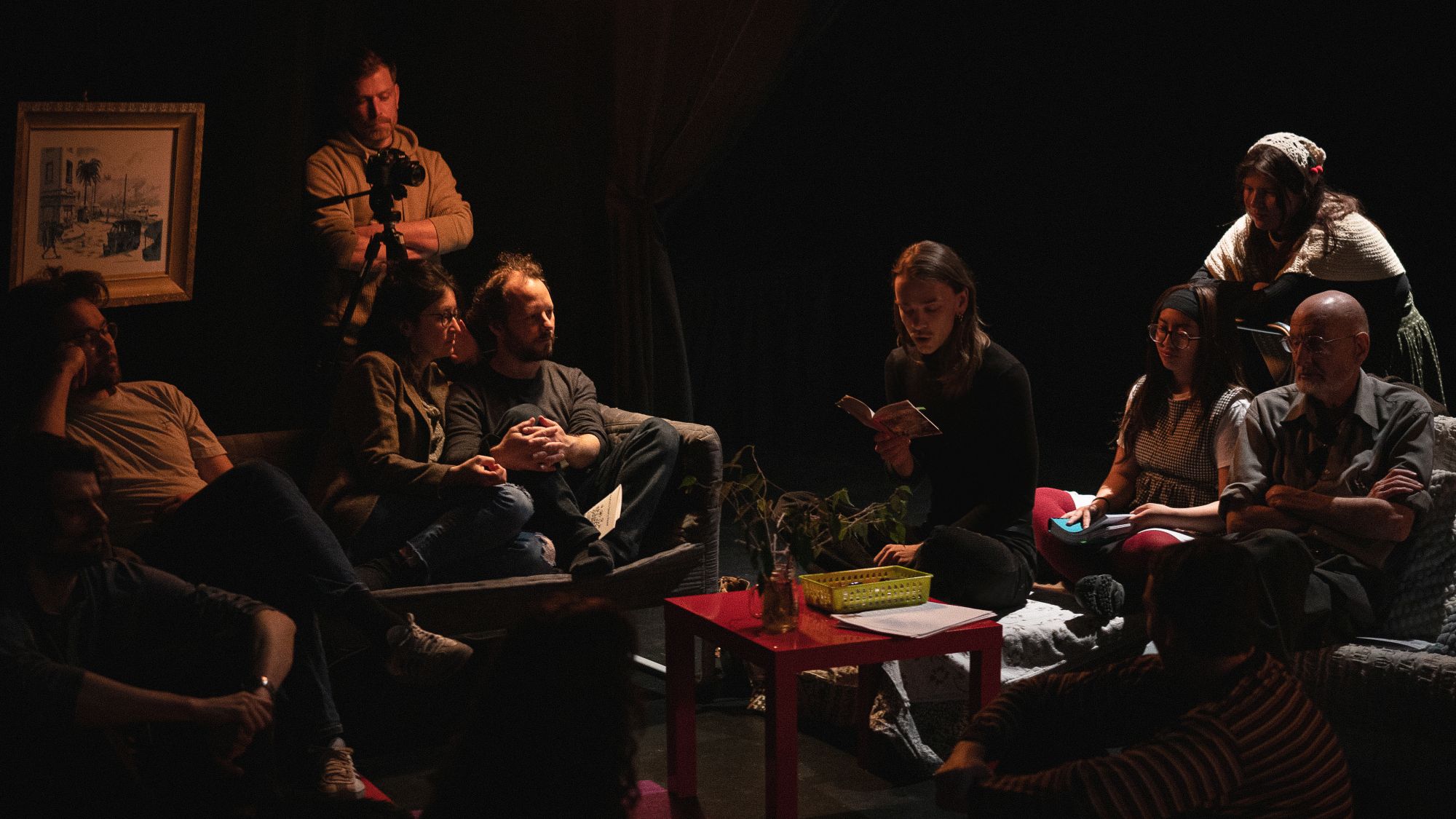
Last year, the festival school of “Homo Novus” festival was led by the Canadian collective “Mammalian Diving Reflex”, known for their socially responsible, engaging and participatory art practices. During the festival school, participants – artists and teenagers – developed more than 40 ideas inspired by the Avotu Street neighbourhood and Mammalian’s approach to socially engaged site visits. A month later, a similar process was implemented in Quebec City, Canada, where local artists explored socially responsible art-making in the Saint-Roch neighbourhood.
This marked the first phase of Mammalian’s new project “Droppings”. The second phase took place this April, when an idea conceived in Riga – “Snorre’s Story Hour” – was selected by the by the Quebecois artists and brought to life in Quebec City. Two artists from the Riga festival school – poet Māra Ulme and the festival school’s creative producer Samuels Ozoliņš – took part in a week-long residency in Quebec to realise the idea with the local cohort. The aim was to explore how an idea inspired by Avotu Street would resonate with a different audience in a new context, therefore promoting international artistic cross-pollination.
The residency culminated in a playful, interactive reading event where artists and audience members experimented with new ways of reading, The inspiration for this performance was Snorre Karkkonen Svensson from the “House of Languages” on Avotu Street, who shared his unique method of reading 200 books at once with the festival school participants.
The next phase of “Droppings” will take place in Milan – and who knows, maybe it will return to Riga? Stay tuned!
📷 1–3 Shanya Ramirez, 4-5 Isabel Ahat, 6 Samuels Ozoliņš
Māra Ulme, an artist who participated in the 2025 “Homo Novus” festival school on Avotu Street and the Residency in Canada, writes about how it was implemented and what they did there:
To answer the question “What did you do there?” would require several pages, but I believe the most important achievement was creating a small artistic victory. That is – a one-time event in which a special atmosphere was created; a space where all felt open, seen, and aware that we were doing something meaningful.
Practically speaking, we had been regularly video-calling with the Quebec team for three months in advance. IT was clear from the beginning: we would only read books that had changed our lives, and the performance would take place in a black box theatre in the city. On the first day, we split into two small groups.
The scenography group was led by Samuels. Their task was to set up the space — deciding where to place the shelves, tables, sofas, armchairs, and other cozy elements that participants could also bring from home. They also visited the library and spoke with people to find out which books had changed their lives. One of the most challenging decisions seemed to be whether to bring in a large number of books to fill the space and create a visually striking environment, or to include only those books that had been truly special and life-changing for someone. This dilemma sparked wide discussions about what exactly makes a book meaningful — perhaps any book could be significant to someone, even if we don’t know it. In the end, quality triumphed over quantity, and only the books whose impact we were certain of remained in the space.
The performance group, which I led, was responsible for deciding what exactly we would do: how long the performance would last, which books we would read, for how long, and with what intention. It quikly became clear that the best way to manage time was for us to occasionally take charge of the performance ourselves – knowing in advance what we would read and how. In those moments, we also controlled our positions, the music, and the lighting, which reduced pressure on the audience and made the experience more engaging for them as viewers as well.
We timed each excerpt chosen by the team (from books that had changed their lives), and it soon became evident which fragments resonated naturally with one another – not in a forced or mechanical way, but in a way that added depth and meaning. To ensure the performance didn’t feel heavy or boring, we included interactive elements.
The first interactive segment was the “book oracle”: visitors could ask a question, choose a number (the oracle host would count to a book), then pick another number to determine the page and paragraph to be read.
The second interactive break was entirely in the audience’s hands – they could come to the front or remain seated and read a passage from a book that had changed their life.
After that, the cycle repeated twice more: our rehearsed segments (performed by different team members) alternated with the oracle and the open reading section. This structure allowed us to ensure the performance didn’t exceed an hour and a half, remained interactive, and never became dull.
Time really flew by – and I believe that over the course of the week, we succeeded in creating a peaceful, meaningful, and honest space for many. I am (finally and slowly) realizing how much trust I can place in myself and others when I’m in a caring and communicative environment. I will definitely do my best to carry this energy and sense of assurance forward into every project I continue to be part in.
Back

